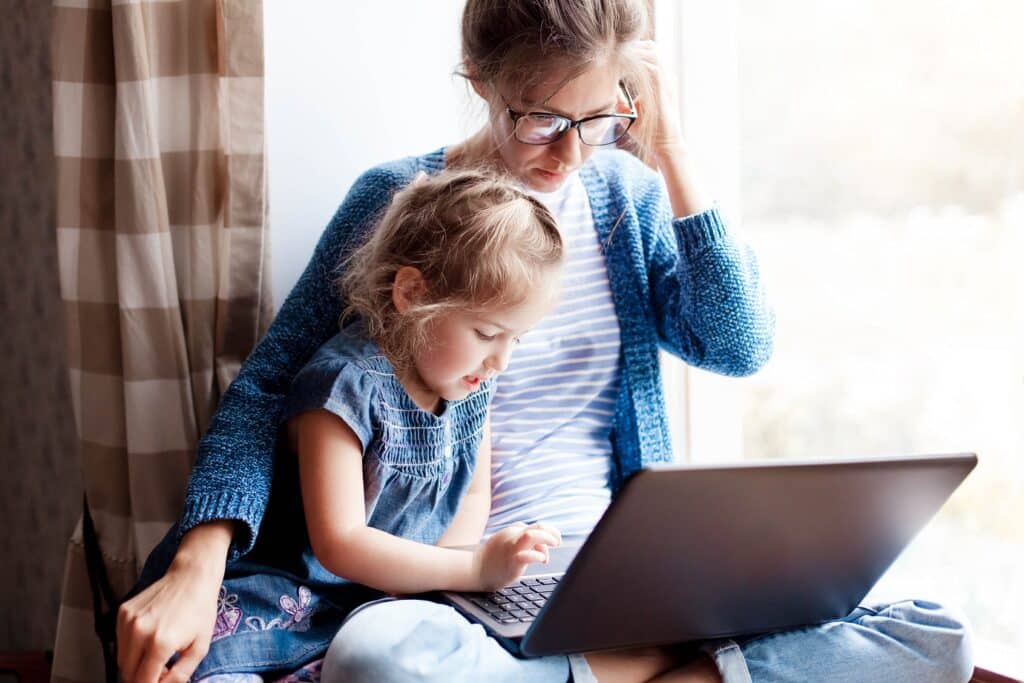I don’t wish to cast a shadow on the post-Mother’s Day glow while the flowers are still fresh and lovely cards full of heartfelt praise are still ringing pleasantly in our ears, but have you ever wondered why Hallmark doesn’t have a special range of cards celebrating working mums?
They should, of course, because we all know combining caregiving and paid work is often tough.
While the ads leading into Mother’s Day are all about “thank you mum, you’re the best”, back at work it’s often a crazy game of ‘Workplace Survivor’, but without the hope of ever winning a job-saving ‘Immunity Idol’.
How crazy? In 2022, the Victorian Government awarded funding for five research projects to deepen our understanding of experiences of disadvantage and discrimination in the workplace. One of these research projects, led by Associate Professor Alysia Blackham at the University of Melbourne, focusses on the experiences of caregivers and their struggle for fair treatment in the workplace.
The final report is just back, and I’m sure Women’s Agenda readers will nod their heads in recognition, while simultaneously shaking their heads in frustration.
There are 2.65 million Australians who provide care to children, parents, relatives, neighbours, and community members every single day. For many, caregiving responsibilities can occur at multiple times throughout their life. Such care can take many forms, including domestic work and physical tasks. However, under-recognised and undervalued forms of care also include emotional labour and varying mental loads.
Some of these caring responsibilities are predictable and can be anticipated in advance; others are less predictable and require immediate attention.
The report’s overall finding was clear: Caregiving has a significant impact on workplace inequality and hurts career advancement.
Some women surveyed said that they actively hid information regarding their caregiver status from employers and their immediate teams. This included lying about the age of children, removing wedding rings during interviews, and hiding pregnancy for extended periods of time.
One woman interviewed said: “I definitely dragged my heels on having kids … you’ve got to get some runs on the board with the job. You can’t just start a job and get pregnant, or you’ll get stuck in a low-level position forever. So yeah, I dragged my feet for ages.”
And another: “Pregnancy and parenting was seen as an inconvenience. My immediate boss did not have children. She would make comments aloud about the inconvenience of mothers returning from parental leave and having to accommodate part time working arrangements.”
The report found 67 per cent of survey respondents believed that work has affected their ability to take on a caregiving role. Many respondents had to look for alternative care arrangements as a result of their work commitments.

Gender gaps in career advancement emerge in parallel to greater caregiving responsibilities, especially when caring for children. This affects workplace recruitment, retention, promotion, pay, superannuation and flexible work and is compounded by workplace cultures that continue to perpetuate negative attitudes towards caregiving.
Careers stagnated again when respondents took on care for their parents, partners, and family/ community members. For some respondents, this exacerbated their economic precarity and financial insecurity.
And respondents on short and fixed-term contracts were much more likely to report feeling a heightened sense of insecurity when trying to access their leave entitlements.
I’ve talked about female caregivers, but yes, men are caregivers too. However, the report makes it clear that women are far more likely to take on that role, and this has ongoing implications for their career advancement and financial resources.
Twenty-three per cent of women compared to 16 per cent of men had requested flexible working arrangements. Women were more likely than men to request workplace adjustments for caring responsibilities (8.1 per cent of women vs 4.9 per cent of men) and family responsibilities (9.6 per cent of women vs 6.2 per cent of men).
Issues concerning caregivers in the workforce were exacerbated by the COVID-19 pandemic – especially in Victoria – as childcare, schooling and aged care were closed or limited during lockdowns. Women carers were particularly disadvantaged as they took on significantly more caring duties than men, increasing their time spent on unpaid care and housework.
Conversely, the onset of the COVID-19 pandemic cemented these flexible practices as a preferable way of working that can be made more readily available. In interviews for the research, participants expressed concern, confusion and anxiety around whether flexible working arrangements would continue, as there has been ongoing pressure to ‘return to normal’ (in-office) ways of working.
If this were to happen it would be a backward step because interview respondents recounted how greater flexibility made them more productive, more engaged, and less burnt out at work. Caregivers tend to be harder working than non-caregivers. The research found that 40 per cent of working caregivers argued they were more productive now than they were before the pandemic.
It is important to note that this survey was conducted among employees in the Victorian public sector (including local government and universities) where workplace flexibility is actually more prevalent.
There is clearly a lot more that can be done to make it easier for all workers with caregiving responsibilities.
The University of Melbourne research found existing entitlements need to be reviewed, to ensure they meet the everchanging needs of caregivers in the workforce. This includes considering increasing personal and sick leave entitlements and making flexible working arrangements the default.
Some other simple things that can make a big difference are promoting and publicising managers taking leave and utilising flexible working arrangements that accommodate for their caring needs to encourage senior role modelling.
You might also consider integrating discussions about flexibility and flexible work arrangements in regular check-ins with staff, as well as making information regarding leave entitlements clearer and more accessible, so employees in all positions and roles can easily understand and utilise their workplace benefits.
I look forward to the Hallmark cards and the TV ads celebrating mums managing the juggle of unpaid caring and paid work. It’s no easy feat without flexibility in workplaces.


